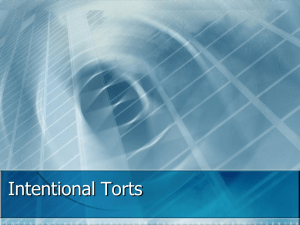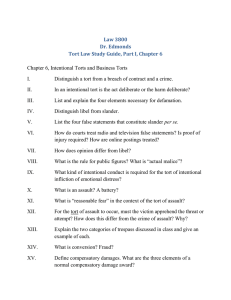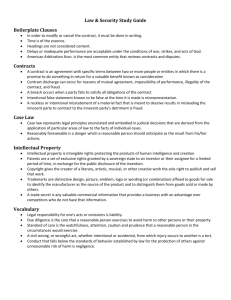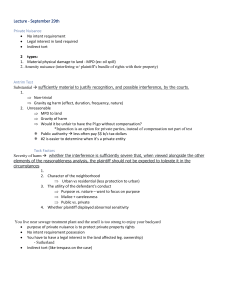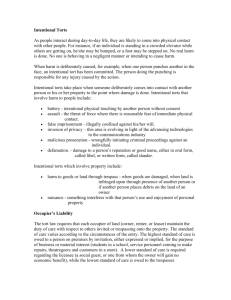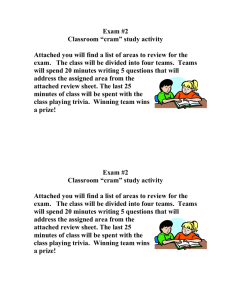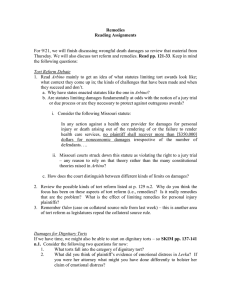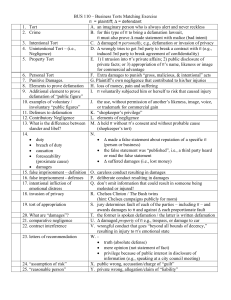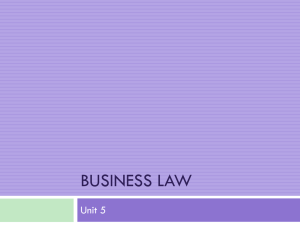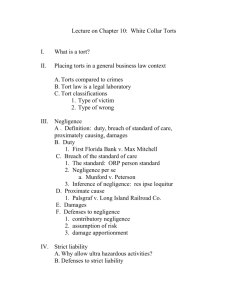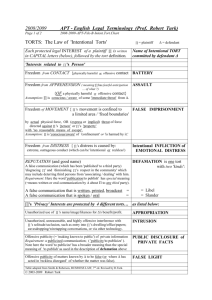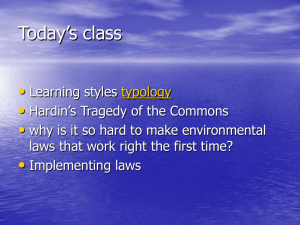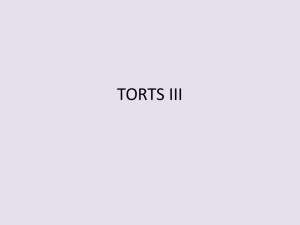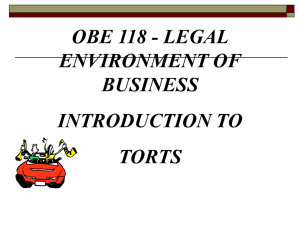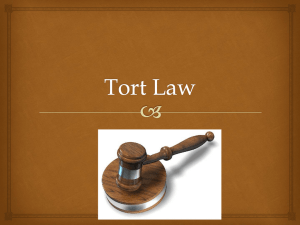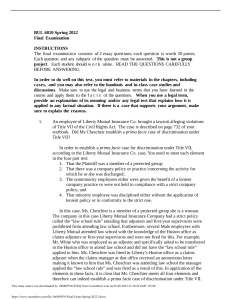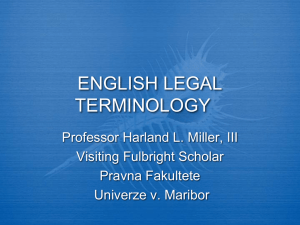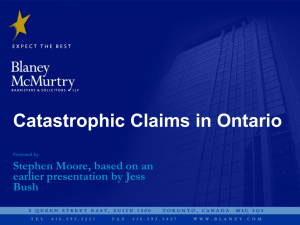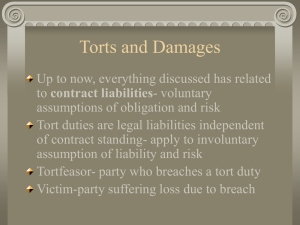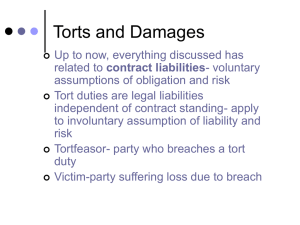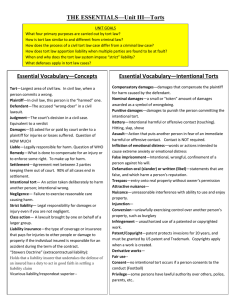Chapter 19--Intentional Torts
advertisement
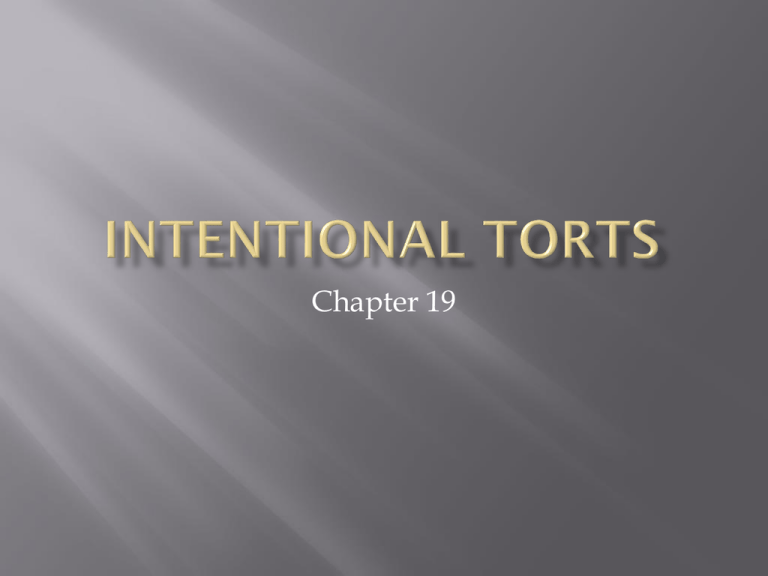
Chapter 19 Understand the categories of damages that can be recovered in intentional tort cases Be able to identify various types of intentional torts, and the elements of each Be able to apply the principles of tort law to sample fact patterns to determine what torts have been committed Compensatory—damages that compensate the plaintiff for harm caused by the defendant Examples? Lost wages, medical bills, “pain and suffering,” loss of consortium Nominal—a small or “token” amount of damages awarded as a symbol of wrongdoing Punitive—damages to punish the person committing the intentional tort Battery—intentional harmful or offensive contact (touching) Examples? Shoving, hitting, slapping What about a kiss? A tap on the shoulder? Assault—action that puts another person in fear of an immediate harmful or offensive contact Actual contact is not required Question: Is it possible to assault an unconscious person? Infliction of emotional distress—words or actions intended to cause extreme anxiety or emotional distress Conduct must be outrageous Would these statements/actions qualify? “You’re really ugly!” “Nobody would ever want to kiss you!” Probably not. Example that would? False Imprisonment—intentional, wrongful confinement of a person against his will Example: restraining a suspected shoplifter Allowed, but must be reasonably brief and use no greater restraint than necessary to protect property Defamation—oral (slander) or written (libel) statements that are false, and which harm a person’s reputation Must be a statement of fact, not opinion “Public figures” must prove actual malice (intent to harm, not just intent to say something) Real property—land/real estate Personal property—things that can be moved Intellectual property—inventions and creative works All are protected in our system! Trespass—entry onto real property without owner’s permission Can a trespasser sue you for damages if they hurt themselves while trespassing? Only for things like booby-traps Or children—attractive nuisance doctrine Higher duties are owed to guests and business invitees Nuisance—unreasonable interference with ability to use and enjoy property Examples? Repetitive loud noises at unreasonable times of day Odors Plaintiff can recover damages and/or receive injunctive relief (stop doing it!) Conversion—unlawfully exercising control over another person’s personal property May use reasonable force to protect property Some states allow use of deadly force (“Make My Day” laws) Infringement—unauthorized use of a patented or copyrighted work Patents protect inventions for 20 years; after that, the invention becomes public domain Must be granted by US Patent and Trademark office (www.uspto.gov) Copyrights apply automatically when a work is created (registration still recommended) Covers the work for the lifetime of the holder, plus 70 years Derivative works First sale Fair use Consent—no intentional tort occurs if a person consents to the conduct (e.g., football players, boxers, wrestlers) Privilege—some persons have lawful authority over others (police, parents, etc.) Self-defense—must use reasonable force Defense of property Work in pairs to answer problem 19.1 (p. 231) and the three “You Be the Judge” activities on pp. 234, 239 and 248 Turn in for class participation credit
